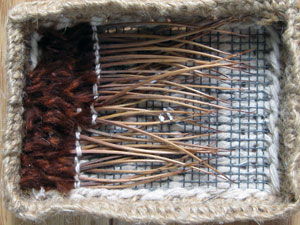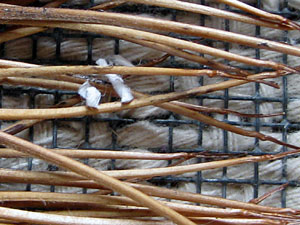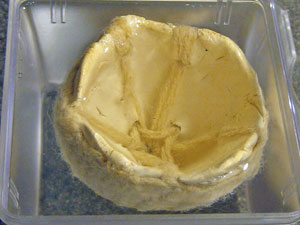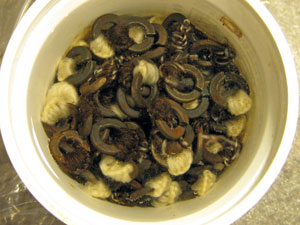The past weekend I found some fiber looking somethings near the baseboard in the family room. On closer inspection and after a google search I found out the terrible news. They are Tinea pellionella, casemaking moths.
They are known as casemaking moths because according to the Statewide Integrated Pest Management site of University of California Agriculture and Natural Resources, “…always carry a silken case with them as they feed. They never leave this silken tube, but enlarge it as they grow.” Apparently the case is supposed to be the color of the fabric they have eaten. Most of the critters I found on the gray-green wool carpet are rather tan.
So here is the thing, if they stay in their silken vessel and it grows with them, and they are rather small when I find them, two questions come to mind.
How long have I not seen them?
And how many are there that I can not yet see?
Totally creeps me out.
Apparently, the female can lay “an average of 40 to 50 eggs…” but I was unable to find out how many of those eggs will be viable.
Most of the information I found indicated that pyrethrin was the solution. I do not want to use dangerous chemicals. We share our home with house rabbits who frequent the space. Any chemical residue could end up on their fur which could be potentially dangerous when they groom themselves or each other. Actually if there are fumes, respiratory problems could occur as well.
I emailed my friend at the UC Botanical Garden to find out how to handle the situation. After talking with him, I pretty much decided that I would give the carpets a good cleaning and then probably try an application of Diatomaceous earth. Unless I opt for the new information that I found tonight on the Northwest Center for Alternatives to Pesticides site. The article stated that while cold temperatures are not effective, placing a space heater at 120º for 4 hours in the room where the moths have been found can be.
Then the horror of horrors occurred to me. I had read that it is a good idea to remove all bird nests near your house. The moths find nests a great place to thrive. I got a sick feeling when I realized I have nests in my studio. What if the moths have gotten in my studio? I have several pieces in progress, hung, and stored in the space; many have a fiber element. I started on one wall and made my way around the space. And it was confirmed that they really do like nests and even some of the work in progress had been attacked.
This is the interior of a lid that has protea seeds bound to hardware cloth.


Some work that is constructed of bound plant material and coated with wax had evidence of moths. There was one bronze and ceramic piece that had a single critter attached to its underside.
I disposed of most of the work. It was amazingly invigorating throwing out stuff. Then I found a ceramic cup bound with wool that had an application of shellac. I placed the piece in a container of vinegar.

I also had bound some split washers for a code piece and noticed there were a couple of critters in the container so I dumped the lot in vinegar. There is a single floating critter.

What I do not understand is why they did not attack the larger wool pieces that are in progress, but they did attach themselves to one of my clean work shirts hanging next to them. I’m glad it was the shirt.
Tomorrow I need to do a thorough cleaning of my studio.
